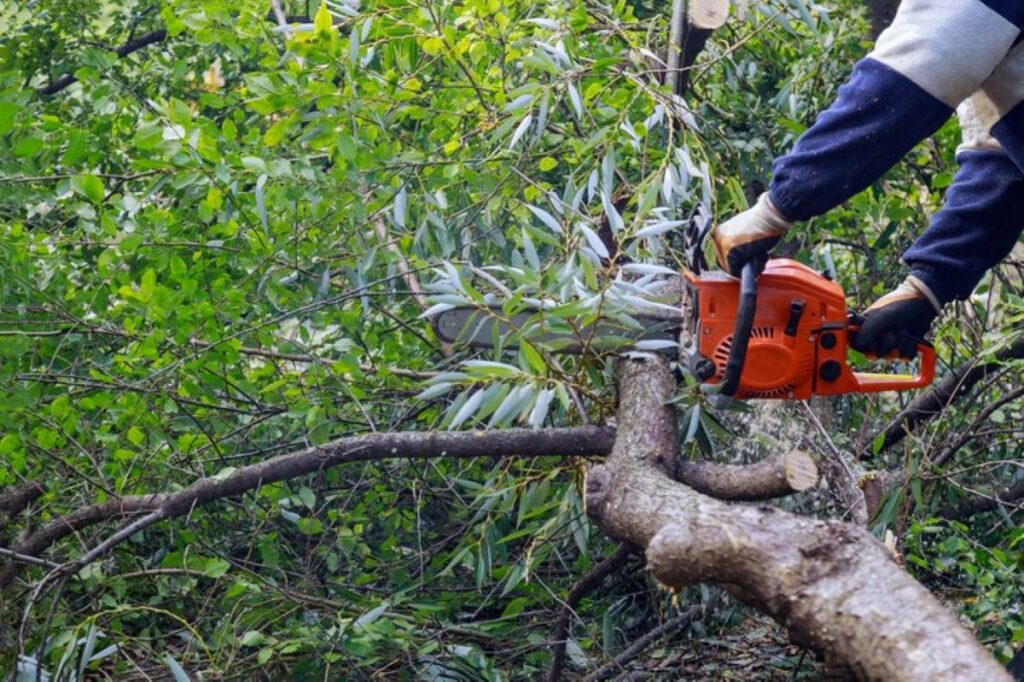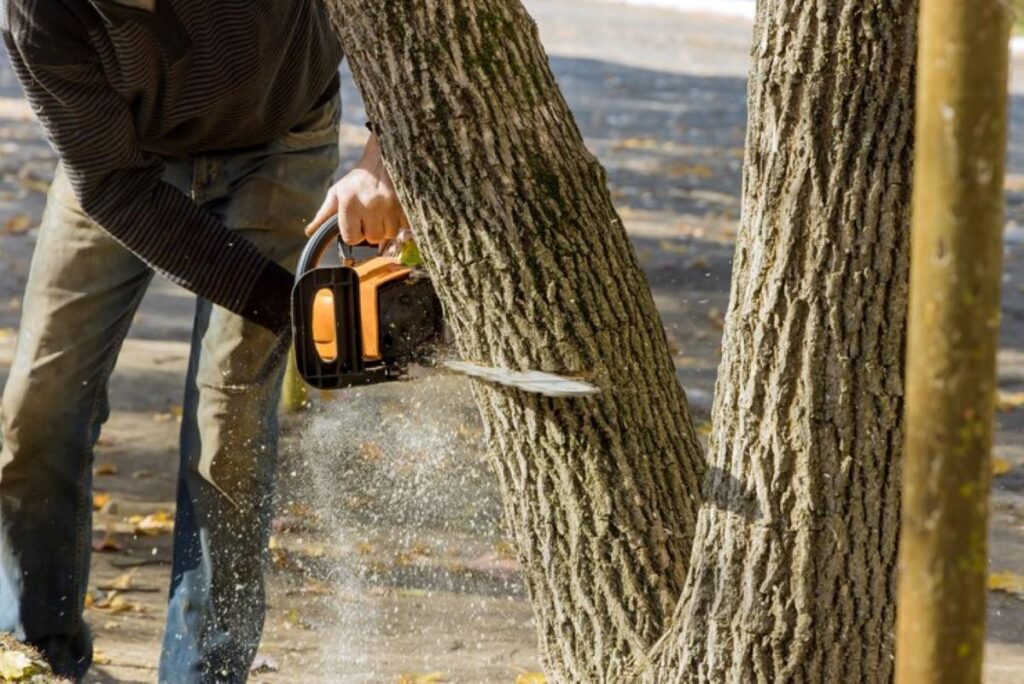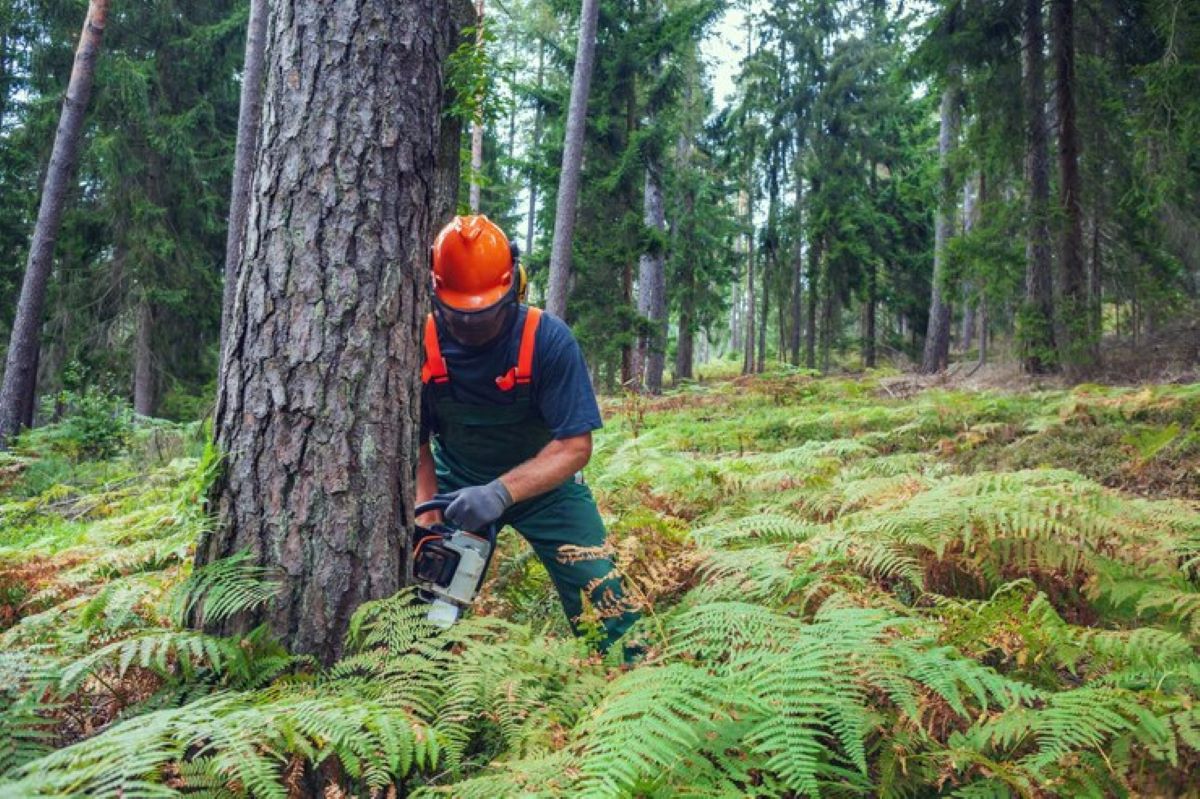Can you legally remove a tree growing close to your boundary fence in Sydney? The answer depends on multiple factors including council regulations, property ownership, and environmental protection laws. Many homeowners face challenges when dealing with boundary trees—whether it’s overhanging branches, roots affecting fences, or concerns about safety and property damage.
Understanding the legal framework is essential. Unauthorised tree removal Sydney can result in substantial fines, legal disputes with neighbours, and penalties from local councils. The regulations governing boundary fence tree removal vary across different Sydney councils, making it crucial to know your specific obligations.
Tree pruning regulations Sydney also differ depending on the tree’s size, species, and location. Some minor work may proceed without permits, whilst other situations require formal applications and neighbour consent.
This article clarifies when and how you can remove or prune a tree close to a boundary fence, helping you navigate the complex requirements whilst maintaining good neighbour relations and avoiding costly legal issues.
What Are the Legal Requirements for Tree Removal Near Boundary Fences in Sydney?
What laws govern tree removal near property boundaries? The Dividing Fences Act 1991 NSW is the main law that regulates vegetation and structures along boundary lines. This Act outlines how neighbours share responsibility for dividing fences and related vegetation issues, but it doesn’t specifically control tree removal.
The State Environmental Planning Policy (Biodiversity and Conservation) 2021 is the primary law that protects the environment. This policy regulates the clearing of native vegetation and protected trees on private land. Any tree removal near boundaries must follow these environmental laws to safeguard Sydney’s urban canopy and biodiversity.
Local council Development Control Plans (DCPs) introduce another level of regulation. Each Sydney council has its own tree preservation orders and local environmental plans that identify protected trees based on species, size, or heritage value. These local rules are often stricter than state laws.
Property owners can face significant penalties for not complying with these regulations:
- Fines ranging from $1,100 to $110,000 for unauthorised tree removal
- Orders to replant removed trees at the owner’s expense
- Civil liability for damages to neighbouring properties
- Potential criminal prosecution for serious environmental violations
The legal requirements for tree removal Sydney require careful consideration of multiple layers of regulation. Property owners can avoid expensive legal consequences by checking both state environmental policies and council-specific regulations before removing any tree close to a boundary fence.
Do You Need Permission or Permits to Remove a Tree Close to a Boundary Fence?
When are tree removal permits Sydney requirements triggered? Council permits are mandatory for removing or significantly pruning most trees on private property, particularly those near boundary fences. Protected trees, native vegetation, and trees exceeding specific height or trunk diameter thresholds typically require formal approval before any work begins.
Can you prune without permits? Minor pruning up to 10% of a tree’s canopy may proceed without council consent tree pruning applications, provided the work aligns with Australian Standard AS 4373. This exemption covers routine maintenance like removing small dead branches or light shaping that doesn’t compromise the tree’s health or structure.
What about property owner consent tree removal? Before touching any tree, you must secure written permission from the property owner where the tree grows. This applies even when:
- The tree overhangs your property
- Branches cause nuisance or damage
- You believe the tree poses risks
Councils will reject permit applications lacking documented owner consent. If the tree sits directly on the boundary line, both property owners share responsibility and must jointly approve any removal or major pruning work. Attempting tree work without proper authorisation exposes you to significant penalties and potential legal action from affected parties.
How Are Boundary Trees Treated Differently in Tree Removal Rules?
Can you prune overhanging branches from your neighbour’s tree without asking?
Yes, you have the legal right to prune overhanging branches up to the boundary line without requiring your neighbour’s consent. This applies when branches extend over your property, provided you comply with Australian Standards AS 4373 and local council policies. The pruning must not exceed 10% of the tree’s canopy and should be done carefully to avoid damaging the tree’s health.
When do you need permission to prune boundary trees?
Permission becomes mandatory when you need to access your neighbour’s property to perform the pruning work. Entering someone else’s land without consent, even to trim your own side of overhanging branches, constitutes trespassing. You must obtain written permission from the property owner before stepping onto their land, regardless of how minor the work may seem.
What happens when a tree grows directly on the boundary line?
Trees positioned exactly on the boundary line belong to both property owners equally. Neither party can remove or significantly prune the tree without the other’s agreement. When neighbours cannot reach consensus, seeking council guidance or mediation becomes necessary. Some councils offer specific advice for shared boundary trees, whilst others may direct you towards legal channels under the Trees (Disputes Between Neighbours) Act 2006 to resolve the matter formally.

What Are the Specific Council Regulations for Tree Removal Near Boundaries in Sydney?
Do Sydney councils have different rules for tree removal near boundaries?
Yes, Sydney council tree removal policies vary significantly across different local government areas. Each council maintains its own development control plans and tree preservation orders that dictate when permits are required for boundary-adjacent trees. Some councils like Ku-ring-gai have stricter protections for native vegetation, whilst others may allow more flexibility for certain species or tree sizes.
What documentation do councils require for tree removal applications?
Most councils demand a comprehensive site plan for tree removal application showing the tree’s exact location relative to property boundaries, buildings, and other structures. Applications typically require:
- Detailed site plan with measurements and tree markings
- Written consent from all affected property owners
- Arborist report assessing the tree’s health and structural integrity
- Photographs showing the tree and surrounding context
- Species identification and trunk diameter measurements
What conditions come with approved tree removal permits?
Approved permits include specific permit conditions replanting requirements and time limitations. Standard conditions include:
- Permits expiring within 12 months of approval
- Mandatory replacement planting with native species
- Minimum replacement tree sizes and quantities
- Restrictions on removal methods to protect surrounding vegetation
- Requirements for stump grinding or treatment
Councils may also stipulate protection measures for neighbouring properties during removal operations.
When Can You Remove Trees Without Permits or Consent?
Are there situations where tree removal doesn’t require council approval? Yes, specific exemptions exist for certain tree types and circumstances in Sydney. Understanding these exemptions can save time and administrative costs whilst ensuring compliance with local regulations.
1. Small trees no permit required
This typically applies to trees under 5 metres in height, though this varies between councils. Many Sydney councils maintain exempt species lists that identify trees you can remove without formal approval, often including invasive or non-native species that pose environmental concerns.
2. Dangerous trees exemption
This allows immediate removal when a qualified arborist certifies that a tree presents an imminent safety risk. Dead trees, structurally compromised specimens, or those with severe disease often qualify for this exemption. You must retain the arborist’s written assessment as evidence of the tree’s condition.
3. Priority weeds removal
Priority weeds listed under biosecurity legislation can usually be removed without permits, as their eradication benefits the local ecosystem. These include species like Camphor Laurel and Coral Trees in certain Sydney areas.
4. Exempt trees removal Sydney
Regulations don’t extend to healthy trees causing minor inconveniences. Removing trees solely for aesthetic improvements—such as enhancing views, reducing leaf litter, or increasing sunlight—requires standard council approval. Even exempt removals may still need property owner consent if the tree isn’t on your land.
How Should You Handle Neighbor Disputes Over Tree Removal Near Boundaries?
What triggers most neighbour disputes over tree removal in Sydney?
Disagreements typically arise when:
- Overhanging branches drop leaves or debris onto adjacent properties
- Roots damage fences or structures
- One party wants to remove a shared boundary tree without the other’s agreement
Blocked views, reduced sunlight, and concerns about tree safety frequently escalate tensions between neighbours.
Can councils mediate these vegetation conflicts?
Sydney councils generally do not intervene in private disputes between neighbours regarding tree removal or pruning. Their role remains limited to enforcing development consent requirements and environmental protection regulations. Property owners must resolve disagreements through direct negotiation or legal channels rather than expecting council mediation services.
What legal remedies exist under the Trees (Disputes Between Neighbours) Act 2006?
This legislation provides a formal pathway for resolving vegetation conflicts through the NSW Land and Environment Court. Affected parties can apply for orders to:
- Remove or prune trees causing damage or injury
- Prevent future damage from tree roots or branches
- Require compensation for property damage
The court considers factors including tree health, amenity value, and reasonableness of the application. Legal proceedings should be a last resort after attempting direct communication with neighbours. Professional arborist reports strengthen applications by providing expert evidence about tree condition and risk assessment.
See Also : Tree Removal Near Me: How to Check if You Need Council Approval First
What Are the Risks of Unauthorized Tree Removal Near a Boundary Fence?
Can you face penalties for removing a tree without permission?
Yes, unauthorized tree removal penalties in Sydney can be severe. Councils impose fines ranging from $1,100 to $1.1 million depending on the tree’s significance and protection status. Property owners who remove trees without proper permits face immediate legal action, including court orders requiring replanting at considerable expense.
How does illegal tree cutting affect your property?
Fines for illegal tree cutting Sydney extend beyond monetary penalties. Unauthorized removal creates permanent records on property titles, potentially reducing market value by 5-15%. Buyers often view these violations as red flags during due diligence searches.
What happens to neighbour relationships after unauthorized removal?
Legal consequences unauthorized pruning creates lasting tensions between neighbours. Affected parties can seek compensation through civil claims for loss of amenity, privacy, or shade. These disputes frequently escalate to Land and Environment Court proceedings, costing tens of thousands in legal fees whilst damaging community relationships irreparably.

How Can You Ensure Safe and Compliant Tree Removal Near Your Boundary?
Consult your local council guidelines before touching any tree near a boundary fence. Each Sydney council maintains specific policies on tree management, and checking these requirements first prevents costly mistakes. Professional arborists bring essential expertise to assess tree health, determine permit requirements, and execute safe tree removal boundary fence Sydney projects without damaging property or relationships.
Seeking expert advice protects you legally and financially. A qualified arborist can:
- Evaluate whether your tree qualifies for permit exemptions
- Prepare necessary documentation for council applications
- Identify the safest removal methods for boundary-adjacent trees
- Advise on compliant tree removal advice specific to your situation
Never proceed with boundary tree work without proper assessment. The combination of professional arborist consultation and council compliance ensures your project proceeds smoothly. Whether pruning overhanging branches or removing an entire tree, expert guidance maintains neighbourhood harmony whilst protecting you from fines and legal disputes. Contact a certified arborist today to discuss your specific circumstances.
FAQs About Tree Removal Near Boundary Fences in Sydney
Only with proper council approval and owner consent. Unauthorized removal can lead to fines and legal issues.
2. Do I need a permit?
Most boundary trees require a permit, especially protected or native species. Minor pruning (up to 10% of the canopy) usually doesn’t.
3. Can I prune overhanging branches?
Yes, up to the boundary line without permission, if it doesn’t harm the tree. Entering the neighbour’s property requires written consent.
4. What if a tree grows on the boundary line?
Both owners must agree. Disputes may need council guidance or legal resolution.
5. Are there situations without permits?
Yes — small trees, dangerous trees certified by an arborist, and priority weeds may be removed without council approval.
6. What happens if I remove a tree without approval?
Fines, mandatory replanting, property value impact, and potential legal action.
7. How can I stay compliant?
Check council rules, hire an arborist, get property owner consent, and follow legal and environmental regulations.
